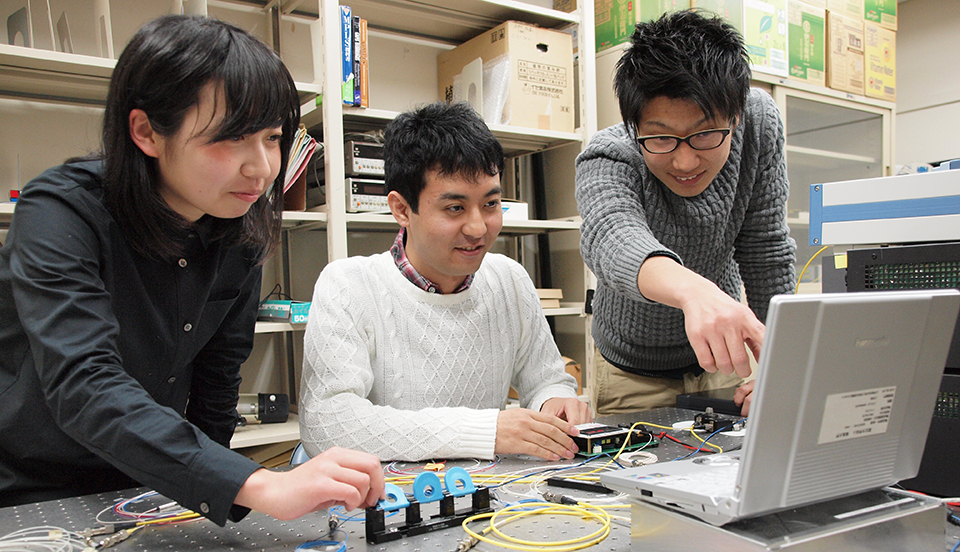
About this department
The Department of Optical Science and Technology, which provides the foundation for the Optical System Course, was established in October 1993 with the main aim of training engineers who can adapt to changes in the industrial structure. At the time, the department with the name "Optical" was the first department in the national university to offer systematic optical engineering teaching and research. The Optical System Course adopted and systematized the optical science and engineering education that had previously been conducted individually in fundamental science, electrical engineering, mechanical engineering, applied chemistry, applied physics, and information engineering. We aim to train human resources with a wide range of knowledge and technologies related to optical science and optical engineering to serve the future's sophisticated, diversified, and internationalized information society. The Optical System Course consists of "Optical Materials and Devices" and "Optical Information Systems".
Unique
The Optical System Course is unique in Japan since it is systematically designed for optical-related education and research that has been conducted in many academic fields. There is a lot to learn from optical materials to optical devices and systems. In addition, the Optical System Course, which is integrated with the on-campus research institute known as "Institute of Post-LED Photonics", provides an advanced educational and research environment. Many members of the team will support you in your studies and research.
Introduction
Optical Materials and Devices
This course provides education and research on material science and photonics to develop functional artificial optical materials, photoelectric conversion devices, optical information processing devices, and other technologies that effectively use light.
Optical Information Systems
This course provides education and research on optical information technology, optical communication systems, and image processing systems. These will enable systems that produce user-friendly ultra-realistic images including 3D images and aerial images, high-definition images, high-capacity optical communication, and diagnostic support systems for finding lesions from X-ray CT images of the human body.
- Click here for the original site https://www.opt.tokushima-u.ac.jp/

